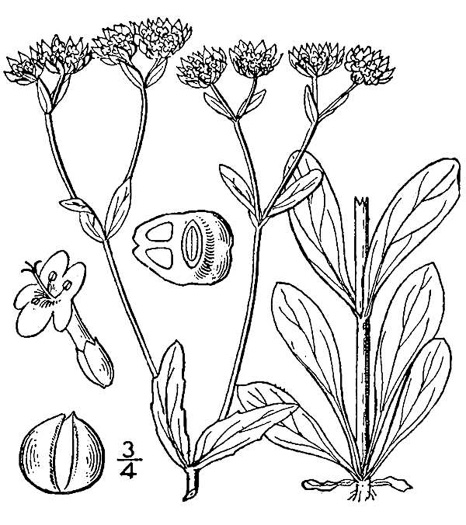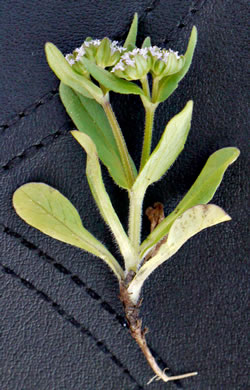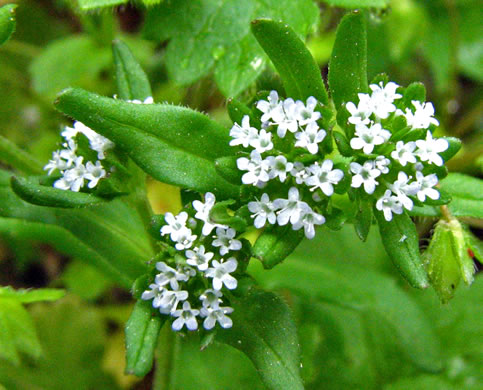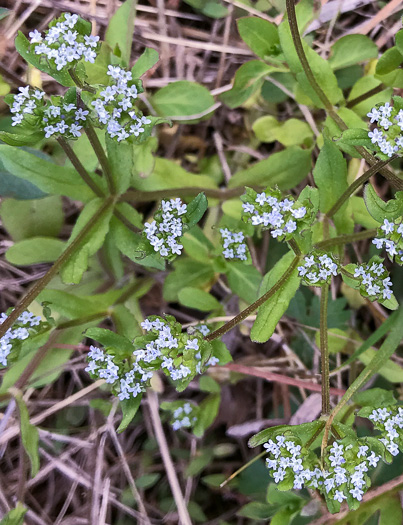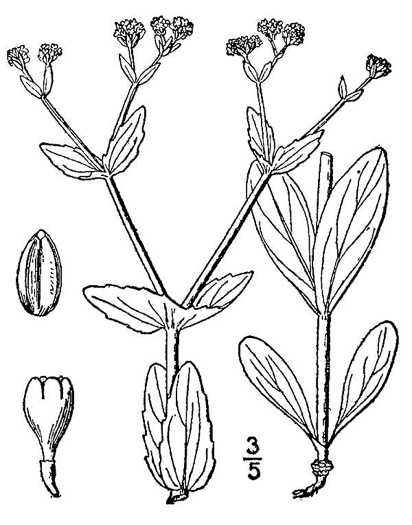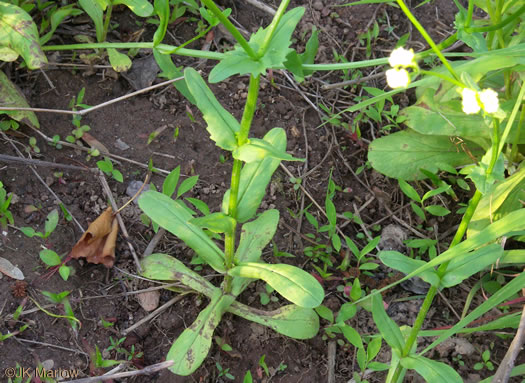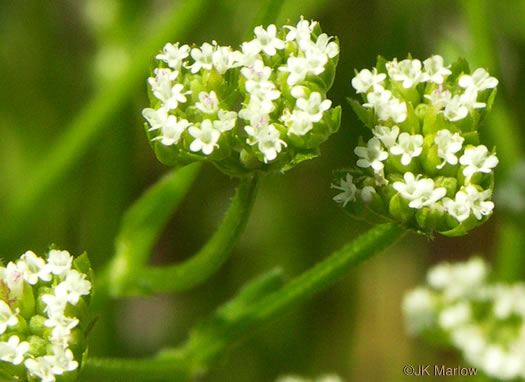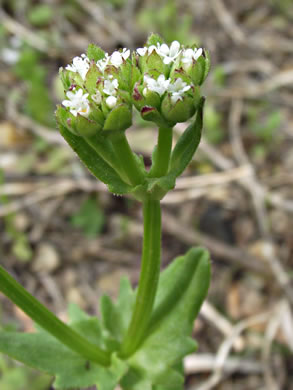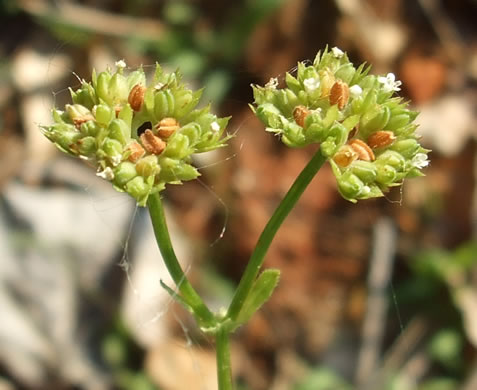Hovering over an image will enlarge it and point out features (works better on desktop than on mobile).
![]() A camera indicates there are pictures.
A camera indicates there are pictures.
![]() A speaker indicates that a botanical name is pronounced.
A speaker indicates that a botanical name is pronounced.
![]() A plus sign after a Latin name indicates that the species is further divided into varieties or subspecies.
A plus sign after a Latin name indicates that the species is further divided into varieties or subspecies.
Most habitat and range descriptions were obtained from Weakley's Flora.
Your search found 3 taxa in the family Valerianaceae, Corn Salad family, as understood by Weakley's Flora.

![]() Common Name:
European Cornsalad
Common Name:
European Cornsalad
Weakley's Flora: (4/24/22) Valerianella locusta FAMILY: Valerianaceae
SYNONYMOUS WITH PLANTS National Database: Valerianella locusta FAMILY: Valerianaceae
SYNONYMOUS WITH Vascular Flora of the Carolinas (Radford, Ahles, & Bell, 1968): Valerianella locusta 175-01-001 FAMILY: Valerianaceae
Habitat: Roadsides, moist forests, bottomlands, disturbed areas
Common to uncommon in the Carolinas (rare in GA)
Non-native: Europe

![]() Common Name:
Beaked Cornsalad
Common Name:
Beaked Cornsalad
Weakley's Flora: (4/24/22) Valerianella radiata FAMILY: Valerianaceae
SYNONYMOUS WITH PLANTS National Database: Valerianella radiata FAMILY: Valerianaceae
SYNONYMOUS WITH Vascular Flora of the Carolinas (Radford, Ahles, & Bell, 1968): Valerianella radiata 175-01-002 FAMILY: Valerianaceae
Habitat: Moist forests, bottomlands, disturbed areas
Common
Native to the Carolinas & Georgia

Common Name: Navel Cornsalad
Weakley's Flora: (4/24/22) Valerianella umbilicata FAMILY: Valerianaceae
SYNONYMOUS WITH PLANTS National Database: Valerianella umbilicata FAMILY: Valerianaceae
INCLUDED WITHIN Vascular Flora of the Carolinas (Radford, Ahles, & Bell, 1968): Valerianella umbilicata 175-01-003 FAMILY: Valerianaceae
Habitat: Moist forests, bottomlands, disturbed areas
Rare
Native to the Carolinas
Your search found 3 taxa. You are on page PAGE 1 out of 1 pages.

